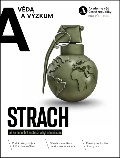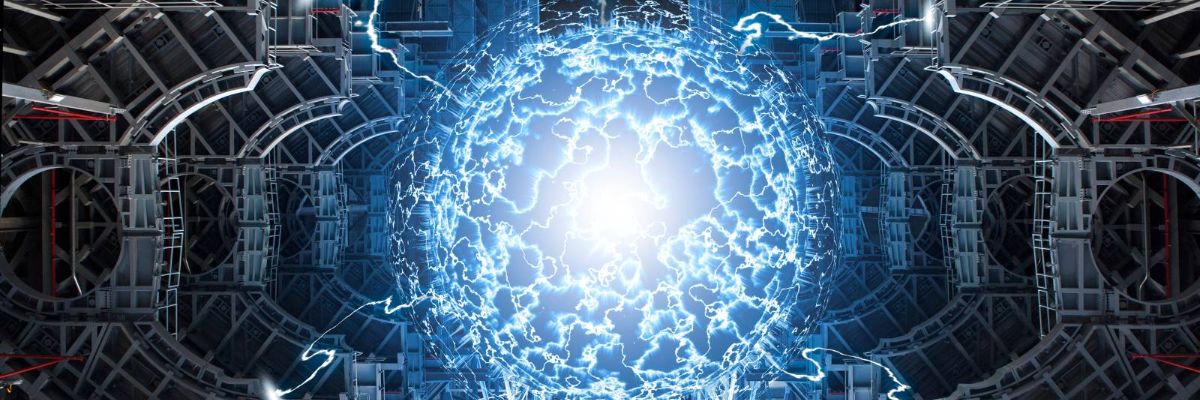
The future of energy: small modular reactors as a source of cleaner energy
31. 03. 2023
Human society is dependent on electricity; we cannot imagine life without it. So it is no surprise that green energy is an ongoing hot topic. The era of fossil fuels is slowly coming to an end and we must look for new eco-friendly and sustainable sources. Small modular reactors are one possible way forward. Are they safe? What principle do they work on and where can they be put to use? The topic was discussed in a story published in the Czech issue of the CAS magazine A / Věda a výzkum.
No wind, no sun? No problem. Unlike other energy sources, the nuclear ones aren’t dependent on weather. At present, humankind still relies on fossil fuels, although it has been clear for some time that this trend is not only not sustainable but, above all, dangerous for the future of the planet. The transition to green energy obtained from low-emission sources is inevitable. There are several possible ways of achieving this.
The vast majority of people have likely heard of nuclear power or photovoltaics, but probably less so of nuclear fusion. But what about small modular reactors? This new nuclear technology is still not very well known in the Czech Republic, with only less than a fifth of the public familiar with the concept. This is also the reason why experts from the Czech Academy of Sciences are trying to spread awareness, including in the form of a publication published last year in the CAS Strategy AV21 series.
Small and even smaller reactors
Especially now, when not only our country is facing an energy crisis, society should think about how to ensure access to new sources of energy in the future and reduce dependence on foreign supplies. The use of small modular reactors (SMRs) and micro modular reactors (MMRs) appears to be one suitable alternative to wind, hydro, and solar energy.
These are newly developed nuclear technologies that are not yet used in the Czech Republic. They are low-emission and low-carbon. SMRs have a capacity of 10 to 300 MW, while the capacity of MMRs is limited to 10 MW. They are constructed using modular technology so that they can be mass produced and then transported to the place of use and simply assembled there. In addition, reducing the size of the reactor will reduce the production investment. In terms of size, it is reported that a complete SMR should occupy less than one tenth the area of a conventional large reactor.
Ideally, the container design can be achieved in the micro-version, as follows: “The already tested reactor is brought to the site in a container, together with the cooling circuits and power generation equipment. It can then be simply connected to the prepared input, with the factory-loaded fuel allowing continuous operation for several years,” the publication states. When the fuel is exhausted, the equipment is taken back to the factory where it is refurbished and the fuel replaced.
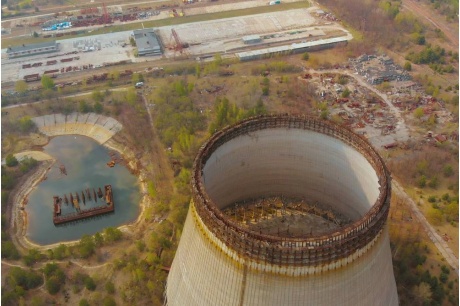
There’s no threat of nuclear accidents – such as the Chernobyl nuclear power plant incident – with small modular reactors, due to their high passive safety features.
A great advantage is the high passive safety system, which virtually eliminates nuclear accidents, which are one of the main reasons why some of the public is against the use of nuclear power. However, surveys conducted by the Public Opinion Research Centre at the Institute of Sociology of the CAS show that the majority of the Czech population retains a long-standing favourable attitude towards nuclear power. More than a third of respondents think that the share of nuclear energy in electricity production should remain at the current level, and 31% even believe it should increase. This is good news overall for experts who advocate the use of nuclear power.
However, a sensitive issue for the Czech public is the location of nuclear facilities near human settlements. This is illustrated by the answers to the opinion poll question whether respondents would agree to the construction of a small nuclear reactor in a town with the possibility of using it as a heating plant. About a quarter of the population would agree with the location, while about half would disagree, according to the survey.
The situation at home and around the world
Small modular reactors fall into two groups. The first consists of conventional light water, pressurised water, or boiling water reactors, which are based on the well-known standard models of large reactors. One example is the Russian floating nuclear power plant Akademik Lomonosov. The vessel has been operating since 2019 and supplies electricity and heat to the town of Pevek in northern Siberia.
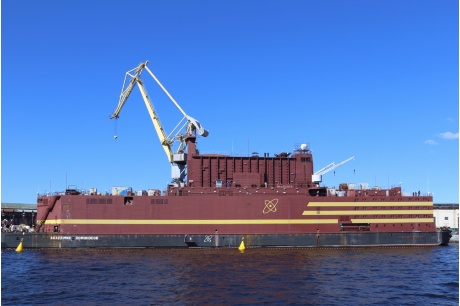
Akademik Lomonosov is a Russian floating nuclear power plant.
The second group includes innovative concepts, such as various types of conventional and fast reactors using liquid metals or gas for cooling. “In this case, it is often an attempt to achieve something along the lines of a long-life battery. The whole reactor would be brought to its designated site in a compact form. It would then be in operation without the need for a fuel change for much longer than ten years,” the publication states. The authors point out that the development of such reactors is still in its infancy and they do not expect prototypes to be put to use until the 2030s.
One exception is the HTR-PM small modular reactor at China’s Shidaowan power plant. A prototype with a capacity of approximately 250 MW is now being commissioned. The high-temperature, gas-cooled, spherical fuel reactor uses uranium TRISO particles which are less than one millimetre in diameter. The coolant gas is helium. In addition to electricity, the reactor will also supply industrial heat.
Other countries around the world are also working on modular reactors. We can mention, for instance, the American project NuScale, the British Rolls-Royce, and the American-Japanese GE-Hitachi. The launch is planned for the end of this decade. The Czech Republic also has five projects currently in the pipeline. There is already a working group set up by the Czech Ministry of Industry and Trade focusing on small modular reactors. The main issues comprise licensing and permission procedures, selecting sites where reactors can be built, and safety issues.
Hands off nuclear
Although some European countries are currently moving away from nuclear power (for instance, Germany) and others have long been strongly critical of it (like Austria), it still appears to be a good substitute for fossil fuels in the transition to low-carbon energy sources. All this, of course, provided that a high level of safety and other regulations based on EU rules are respected. After all, the carbon footprint of the Czech Republic is one of the largest in the world per capita – up to ten tonnes of CO2 equivalent.
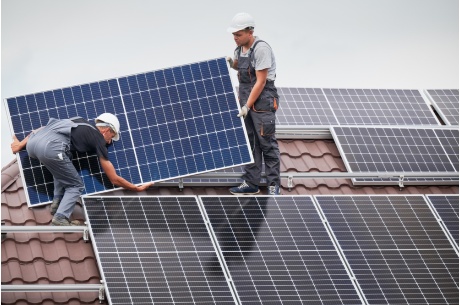
The Czech Republic supports the use of renewable sources of electricity. Photovoltaics, for instance, is a promising development – solar panels can also be placed on the roofs of houses.
When putting together the energy mix, it is also necessary to take into account the situation in our country. This includes geographical conditions, which are invariable, political decisions, and public attitudes. In contrast to photovoltaics, which are developing in a quite promising direction, the situation is somewhat worse with the use of energy sourced from wind or water, as our country does not have suitable conditions – neither the sea nor large rivers. Another option is gas. However, that is seen only as a temporary option and is likely to be increasingly approached in a similar way to coal. The other options (apart from the promising thermonuclear fusion) do not have much potential to be applied efficiently in the Czech Republic.
How the political representation will approach the issue of expanding the use of nuclear energy sources depends also on public attitudes and awareness. The aim of the CAS Strategy AV21, with its motto “Top research in the public interest”, is to argue in its favour with clear-cut and well-founded information.
________________________________________
SUSTAINABLE ENERGY
The publication Small Modular Reactors by Martin Ďurďovič, Slavomír Entler, Jan Horáček, Jiří Málek, Jan Syblík, and Vladimír Wagner was published in 2022 as part of the Sustainable Energy research programme of the CAS Strategy AV21 (the Czech online version is available free of charge on the publisher’s website). The programme focuses on addressing interdisciplinary research challenges along with the impact of the ongoing energy transition on society, and covers key areas related to the transition to sustainable energy. Globally, fossil fuels are still the main source of energy, with a share of around 83%. Renewable energy is growing, but at present it only amounts to around 15%. With energy consumption increasing, however, this situation is unsustainable in the long term.
________________________________________
The article is taken from the Czech issue of the CAS magazine journal A / Věda a výzkum.
1/2023 (version for browsing)
1/2023 (version for download)
Written by: Markéta Wernerová, Division of External Relations, CAO of the CAS
Translated by: Tereza Novická, Division of External Relations, CAO of the CAS
Photo: Shutterstock
 The text is released for use under the Creative Commons license.
The text is released for use under the Creative Commons license.
Read also
- A trapped state: The pandemic impact on public attitudes, trust, and behavior
- Aerial archaeology: Tracing the footsteps of our ancestors from the sky
- Archaeologists uncover ancient finds along Prague Ring Road
- Our microbiome largely depends on what we eat, says microbiologist Michal Kraus
- The ABCs of writing: Why did its invention mark a turning point for humankind?
- We learn, remember, forget… What can memory actually do? And can we outsmart it?
- New Center for Electron Microscopy in Brno opens its doors to global science
- The hidden lives of waste: What can we learn from waste workers and pickers?
- A unique lab is hidden right beneath Prague’s Vítkov Hill
- Renewables are a strategic investment in European security, scientists say
The Czech Academy of Sciences (the CAS)
The mission of the CAS
The primary mission of the CAS is to conduct research in a broad spectrum of natural, technical and social sciences as well as humanities. This research aims to advance progress of scientific knowledge at the international level, considering, however, the specific needs of the Czech society and the national culture.
President of the CAS
Prof. Eva Zažímalová has started her second term of office in May 2021. She is a respected scientist, and a Professor of Plant Anatomy and Physiology.
She is also a part of GCSA of the EU.
